Shotshell reloading - isn't it time you got started?
by Thomas Tabor
Australian Shooter April 2004
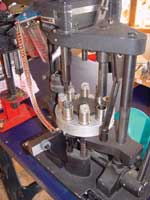
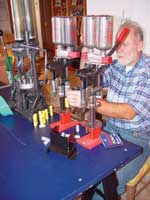
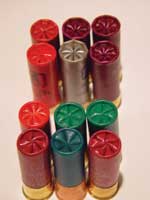
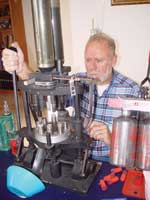
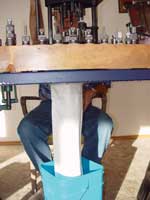 One thing that all reloading disciplines share is the ability to offer a wider range of choices to the sportsman. Like
the shooter who reloads for rifle and pistol, the shotgunner is often
amazed at the extensive number of shooting options that become available
to them when they start reloading their own shells. And, with these options
comes a greater degree of control over your shooting success. By handloading
your own shotshells you can, for the first time, select precisely what
size of shot to shoot, in what amount, and how fast the shot will leave
the barrel. Certainly there are always limitations, but by doing your
own loading it allows you to tailor your shells to more precisely fit
your individual shooting needs. Factory-loaded ammunition simply cannot
provide this level of diversity.
One thing that all reloading disciplines share is the ability to offer a wider range of choices to the sportsman. Like
the shooter who reloads for rifle and pistol, the shotgunner is often
amazed at the extensive number of shooting options that become available
to them when they start reloading their own shells. And, with these options
comes a greater degree of control over your shooting success. By handloading
your own shotshells you can, for the first time, select precisely what
size of shot to shoot, in what amount, and how fast the shot will leave
the barrel. Certainly there are always limitations, but by doing your
own loading it allows you to tailor your shells to more precisely fit
your individual shooting needs. Factory-loaded ammunition simply cannot
provide this level of diversity.
There are more factory loads available in 12-gauge than any other gauge. Clearly this is due to the astounding popularity of that gauge. Nevertheless, if you are looking for any load that is even remotely unique - chances are very good that you won't find it in the commercially produced ammunition. If you are one of those 'unfortunate' individuals who prefers to shoot a ten, 16, 20, 28, or a 410 shotgun, the choices of factory loads will be almost non-existent.
We all cherish the memories of successful hunts and winning competitions, but when these events were made possible as a direct result of your own handloads, they become extra-special. Like a bird hunter who hunts over a pointer that they trained themselves, when that dog locks up on point, the pride the owner feels is virtually unsurpassed. This in itself adds to the pleasures of the hunt at least tenfold. So it is with reloading. When you see that bird crumple under the bead of your shotgun as a result of your load you get that same feeling - a sense of pride and achievement.
One of the best things about reloading shotshells, as compared to metallic cartridge reloading, is that it requires considerably less equipment and paraphernalia. When you buy a reloading press to reload rifle and pistol cartridges, the press is only the first of many purchases to follow. From there you buy dies for each calibre, shell holders, a powder scale, a case trimmer with various collets, a powder funnel, some sort of cartridge-length measuring device, possibly a bullet-puller, a lube pad, a brass tumbler. The list goes on and on. On the other hand, if you want to re-stuff a shotshell, the only piece of equipment that is absolutely necessary is the reloading press. Of course you would have to purchase the appropriate reloading components and have access to some reloading data. It is also highly recommended that you have some way of confirming the weight of your charges, usually with a powder scale. But, not much is really needed in order to manufacture your own rounds for the shotgun. There are lots of additional products and equipment available that you may, or may not, want to add later. There are easy stack cartridge devices that make getting your shells in the cardboard boxes simpler. There is resizing equipment, priming devices, cutters to recycle the components of reject shells, etc. While these items may be nice to have - they are not necessary to start reloading.
If a drawback does exist to shotshell reloading it would have to be that reloading dies are usually difficult to change. In addition, in some cases the dies are almost as expensive as an entire press already set up with the dies. For these reasons, most shooters who load for several different gauges usually purchase a press for each.
The first and most important choice to be made is what style of reloading press would best fit your needs. There are essentially two types of shotshell presses. Most shooters find that a single stage press serves their purposes best, but if you intend to reload a great many shells you may find the progressive-style press more to your liking. Some manufacturers assert extremely high rates of production from their progressive reloaders. Based on the author's experience, these claims are sometimes unrealistic. In reality, a progressive press will generally load about four times faster than most single stage presses. Once the progressive loader has been set up and adjusted, an experienced reloader can usually produce around four boxes in 15 minutes. A single stage press on the other hand would turn out about one box of 25 shotshells in that same period of time.
When a single stage press is used, you work on a single shell and one reloading process at a time. In other words, each step of the process must be accomplished individually. The various dies are usually mounted stationary in the press. This means that the operator has to move the shell from station to station as it is being processed. Reloading presses will vary depending upon the manufacturer and the model, but generally the process goes something like this. The hull is resized and de-primed with the first cycle of the press handle. The next process usually involves the re-priming of the hull. Some presses are equipped with a self-feeding primer device, while others require the operator to manually place a primer in position for seating. Next, the powder charge is dropped in. The wad is then inserted, followed by the charging of the shot. The crimping of the shell is often accomplished in two steps - a starting crimp is made, followed by a final crimp. In most cases each of these steps requires a separate manipulation of the press handle, a movement from one reloading position to another, and the feeding of the components. This may sound like a lot of work and activity, but before long most people learn the steps and they soon become second-nature and quickly performed.
The basic steps needed to reload a shotshell in a progressive-style loader are the same as those with the single stage press. The difference lies in the fact that with each cycle of the press handle a completed shell is produced by the progressive loader. When the handle is lowered and raised, a single, but different operational step is pre-formed on each of several shells.
In most cases, the progressive-style reloaders are considerably more expensive than the single stage presses. Generally, a progressive-style press requires a bit more time to actually get started in the reloading process. I believe the major drawback in the progressive presses lies in its intended use. A handloader using a progressive loader doesn't normally sit down and load a single box of shotshells - they sit down and load a half case, a full case, or maybe several cases of shells at a time. If the operator should make a mistake, or if there should be some sort of a malfunction in the process - it usually takes an additional amount of down time to cycle the shells through and restart the process.
If you are intending to do a great deal of shooting and reloading, the progressive press is probably just what you need. On the other hand, if you are an occasional hunter or only infrequently shoot clay pigeons, you might prefer the slower, but simpler and easier to use, single stage design.
Shotshell hulls are not all created equal and each possesses unique characteristics. Because of these variations the components must be perfectly matched to the hull. Most shotshell hulls today are made of plastic, but there are still a few paper ones in use. Some hulls have straight, non-tapering walls, while the walls of others are thin at the mouth and thick at the base. This difference mandates the use of different wads in order to produce a proper gas seal. All shotshell hulls are constructed with some sort of a built-in base wad. The height of these base wads and the material used will vary dramatically. Both of these factors influence the type of components used in the reloading process.
In order to produce an effective and safe reload you must follow precisely the recommended reloading data. Deviate from this data and it will affect your shooting performance and worse yet, you could be placing yourself in danger through elevated chamber pressures. Most shooters understand that they shouldn't deviate from the recommended powder or shot-charge, but even something as simple as changing the brand of primer or switching to a wad that appears similar can have severe consequences.
Shotshells are often referred to as being high brass or low brass. These terms have for many years been loosely and quite improperly equated to a shotshell's performance. A shell possessing high brass is believed to be a heavier load that generates higher velocity and carries a larger payload of shot. The low brass is associated with lighter loads. The whole idea that the height of the brass has something to do with the shell's performance is entirely irrelevant. This concept does not apply to factory-loaded ammunition, let alone handloads. Nevertheless, many shooters today still falsely believe that more brass somehow equates to higher performance. I'm not sure how this idea got started. I can only assume that a metal band located in the area of the powder charge was somehow looked upon as a form of reinforcing. In reality, the brass has nothing to do with the strength of the hull, or the load performance, whether it is a factory-loaded shell or a handload.
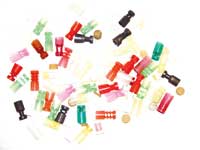 Much like metallic cartridge reloading, the cost of reloading your own ammunition will depend on the initial cost of the equipment and how much reloading you do. The cost of reloading presses will vary from one manufacturer to another and also depends on the design of the press. While I don't believe there are any bad presses on the market today - there are certainly some that are much better than others. It's always a good idea to buy the best you can afford, but that doesn't necessarily mean that you have to buy from the top of the price scale either.
Much like metallic cartridge reloading, the cost of reloading your own ammunition will depend on the initial cost of the equipment and how much reloading you do. The cost of reloading presses will vary from one manufacturer to another and also depends on the design of the press. While I don't believe there are any bad presses on the market today - there are certainly some that are much better than others. It's always a good idea to buy the best you can afford, but that doesn't necessarily mean that you have to buy from the top of the price scale either.
The second major influencing factor to the cost of shotshell reloading is the amount of reloading you intend to do. The quantity of components you purchase at a time will be a major influencing factor to your savings. For example, if you do enough shooting and reloading to justify purchasing primers in quantities of 1000, or 5000 versus 100 - you are likely to see substantial savings. If you purchase your wads by the thousand, or even a case of 5000, versus a bag of 250 at a time - you will see a benefit. If you don't plan on doing enough reloading to justify these levels of purchases, an alternative idea would be to join forces with other shooters and split a large-volume purchase. That way you can all take advantage of the cost savings of buying in bulk.
Reloading of shotgun ammo is great fun and once you've turned out a few boxes you will likely find the process both enjoyable and easily accomplished. What other activity has the ability to save you money, provide an opportunity to better your performance, give you a range of choices - and at the same time is fun to do?
